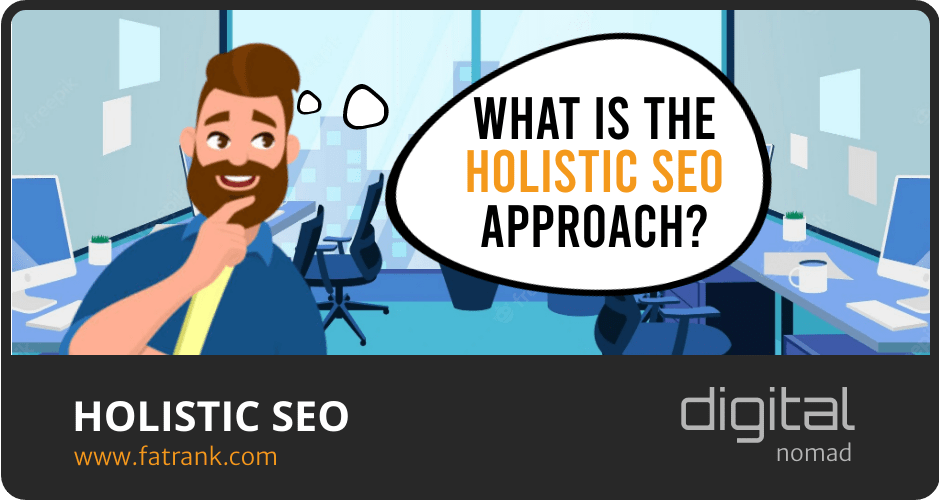
Holistic SEO
Developing a Holistic SEO Strategy is a must if you are looking to rank websites in July 2024.
Search engine optimization (SEO) indeed is just one of the many marketing strategies you can implement to grow your online business.
At the same time, it’s a vast practice that requires lots of tinkering on your website.
Only then will you achieve the perfect settings that will shoot your website on top of search engine results pages (SERPs).
However, to do this, you must step back from the nitty-gritty of SEO—away from keyword research and link building—and look at it as a whole.
This post covers what holistic SEO is about, why you should advocate for it on your website, and steps to help you optimize your website for non-traditional SEO ranking factors.
Contents
What is the Holistic SEO Approach?
In a nutshell, holistic SEO refers to improving all aspects of your online business to improve its rankings on search results.
Again, we’re not just talking here about the SEO you already know. As crucial as authoritative backlinks and high-quality content in your site are, these are just elements that comprise holistic SEO.
Why Advocate for a Holistic Approach in SEO?
While Google remains an algorithm, it has gotten more competent when identifying which pages should rank on top of organic search.
Its constant updates through the years are proof of this.
Back then, you could rank your websites as long as you stuff your web page with as many keywords as possible, a practice known as keyword stuffing.
Fortunately, these spammy tactics no longer work nowadays because the search engine strives toward providing the best possible pages for every query on Google search.
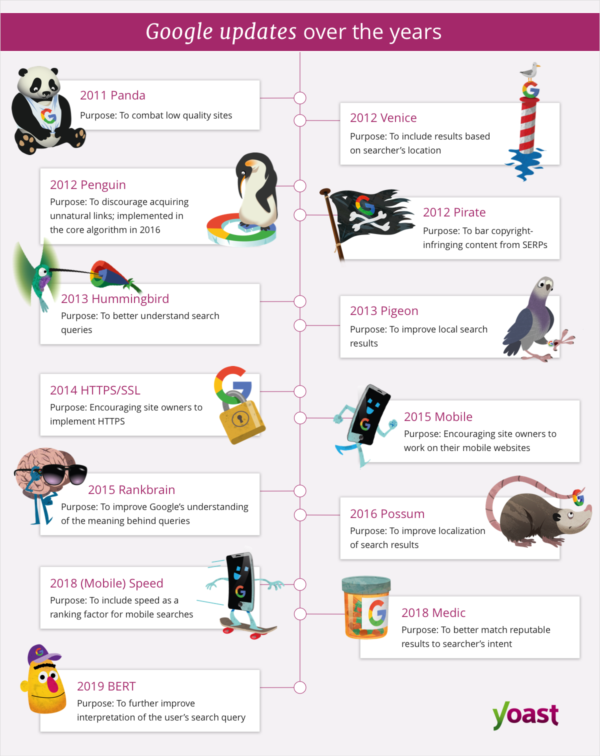
The Panda, Mobile, BERT, and Medic Updates allow search engines to develop a more intelligent algorithm by incorporating new ranking factors. This way, it can better determine which sites should rank on top for search queries.
So, what does this mean?
First, it shows that Google is not afraid to ruffle feathers for its goal.
While its most significant ranking signals remain the same, a few additions reward better websites in the long run. Eventually, mediocre sites will drop out from SERPs while more valuable web pages rise to the top, much to the benefit of users.
Also, and more importantly, you have to think outside the SEO box if you want to get more traffic to your site from Google.
That means you have to consider web development, social media marketing, and even email marketing when optimizing it.
These digital marketing tactics aren’t significant ranking signals compared to backlinks and content. Nonetheless, they all share the common goal of making your website even more valuable to users.
So, by shifting your SEO perspective and embracing new developments and changes in Google’s core algorithm, there’s a chance you can rank higher and generate more visitors to convert into clients or customers.
Ways to Incorporate Holistic SEO Tactics into Your Marketing Strategy
#1 – Make Search Spiders Crawl and Index Your Site Much Easier
A mistake most SEOs make is that they expect search engines to index their site pages for their target keyword as if it’s already a certainty.
Unfortunately, nothing is certain in SEO, especially if you don’t know how to structure your website properly.
Before your site can appear on SERPs, search spiders must be able to crawl its pages first. From here, they should be able to collect information to help them understand what a particular page is about. Only then will spiders index your pages for the most appropriate keywords.
What seems like a simple process requires different factors to work in your favor, all of which involve technical SEO:
Maximize Your Crawl Budget
First, you need to understand the concept of a crawl budget.
Basically, search spiders can only crawl a certain number of pages on your site every day. Once the budget is maxed out, it restarts the next day and picks up where it left off.
So, if you’re wondering why relatively new pages on your site aren’t ranking for their keywords yet, it’s probably because search spiders haven’t crawled them yet.
The assumption here is that your site has tons of pages for search spiders to crawl and refresh regularly. It could take weeks—if not months—before they crawl your money pages.
By then, the page may contain obsolete information, rendering it useless compared to other pages.
To get the most out of your crawl budget, below are things to do for your site:
- Update your sitemap regularly.
- Redirect 40x pages to working pages on your site.
- Limit redirects on a page to only one (max of two).
- Consider noindexing categories and tags in your site. This way, search spiders can crawl your money pages and index them on SERPs faster.
- Analyze your site’s log file to analyze the search bot behavior and see which pages it’s crawling and not crawling.
- Prune underperforming content by deleting them from your site and redirecting their URLs to identical pieces on your site.
Use Schema Markup
Schema markup provides context explaining what the page is about that search spiders will understand.
It tells them if the page is a recipe, product, review, and video, among others. Once the page starts appearing on Google search, it will show the most relevant rich snippets underneath it.
To create schema markup for all your pages, you can use a WordPress plugin like WP Schema to help you seamlessly add the markup in a few clicks.
If not, you can use a free schema markup generator like Merkle.
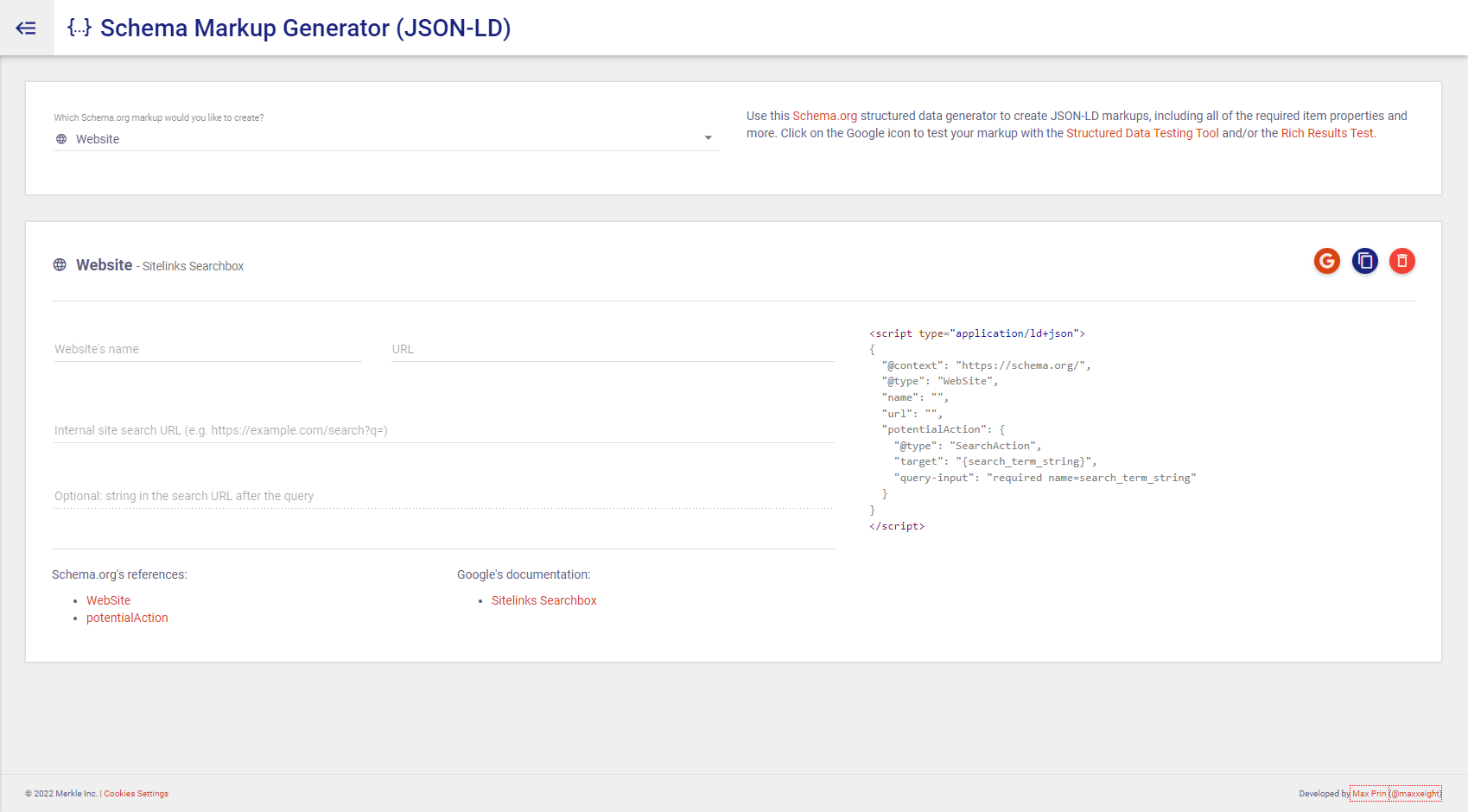
Choose the markup type you want to create, enter the information on your page, and copy and paste the code on your site.
Organize Site Architecture
Search spiders defer to internal links for crawling other pages on your site. Think of them like bread crumbs: internal links leave a trail that spiders can follow to get to another page, and another, and so on.
Internal links are important for another reason: they are the bedrock of how you plan on serving your site pages to search bots.
How your structure your internal links determines your website architecture, which decides how easy or hard crawling your site is for spiders.
Ideally, you want to create a flat website architecture where spiders and visitors can reach all your site pages in less than five clicks from your homepage. The fewer clicks, the better.
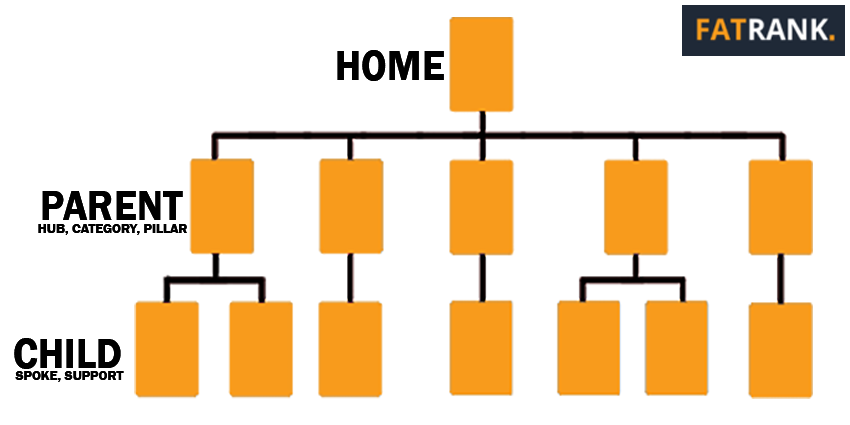
At the same time, while you want to link to as many internal pages as possible, you don’t want to do this without rhyme or reason.
You want to create a parent-child relationship in your interlinking to establish topical relevance. For instance, the pillar hub should link to articles about the same topic and vice versa.
This way, search spiders will see the connection among these interlinked pages, thus helping your website rank higher for your target terms.
#2 – Create a Seamless User Experience
As mentioned, the goal of search engines is to serve their users with the most relevant pages to their search query.
Aside from the page’s content, search engines consider how fast and efficient the page loads.
Studies have shown that slow-loading pages cause visitors to leave the site even before the page has fully loaded. In fact, more than 20% of visitors bounce from the site if it loads longer than four seconds.
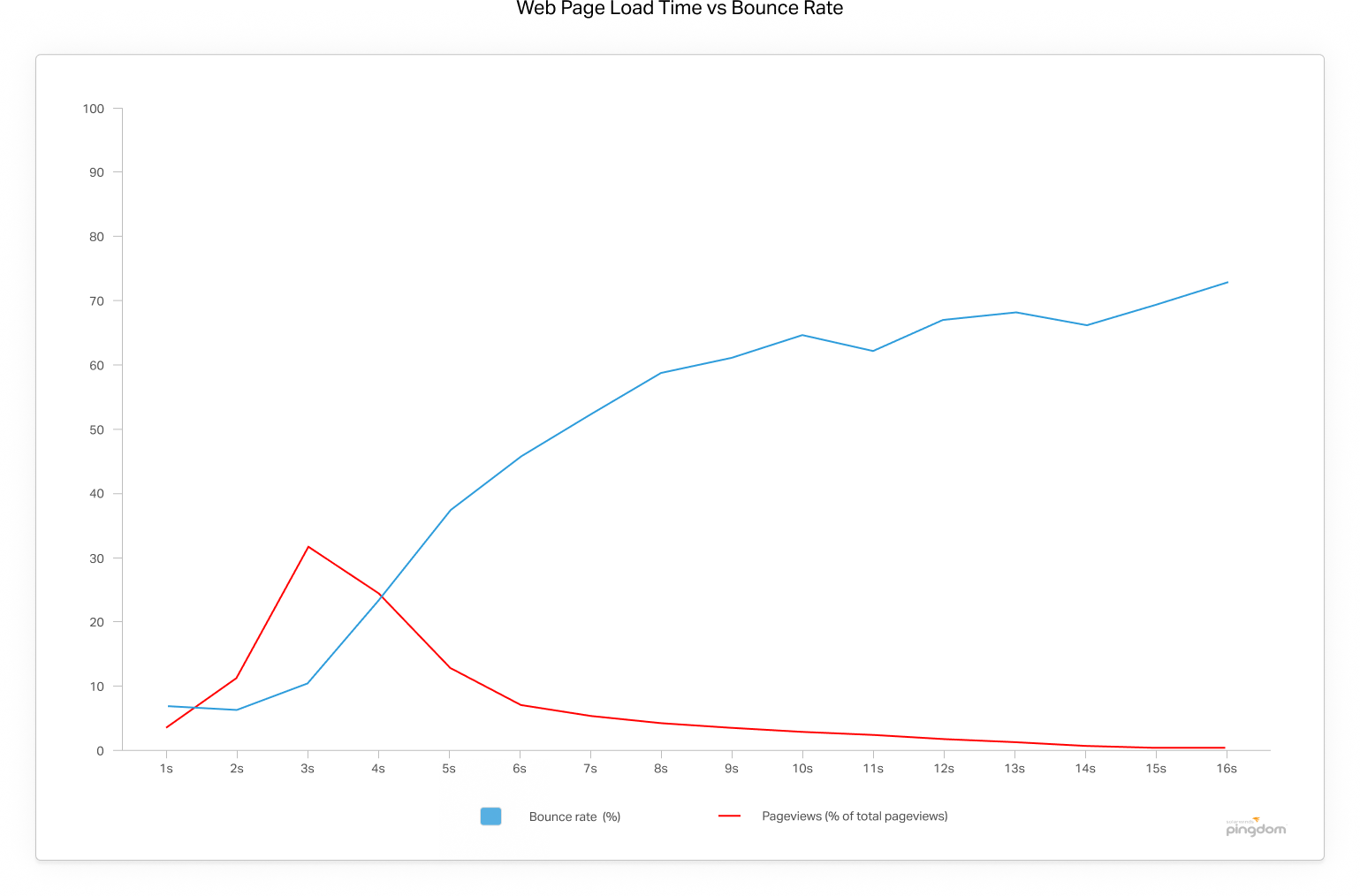
So, instead of just creating content that resonates with your audience, you should also focus on improving your site speed.
To do this, go to PageSpeed Insights and enter the URL of the page you want to analyze.
It measures the page using the Core Web Vitals, the barometer Google uses to analyze your website’s performance since the launch of the Page Experience update.
On the next page, you will see whether your site passed or failed the Core Web Vitals.
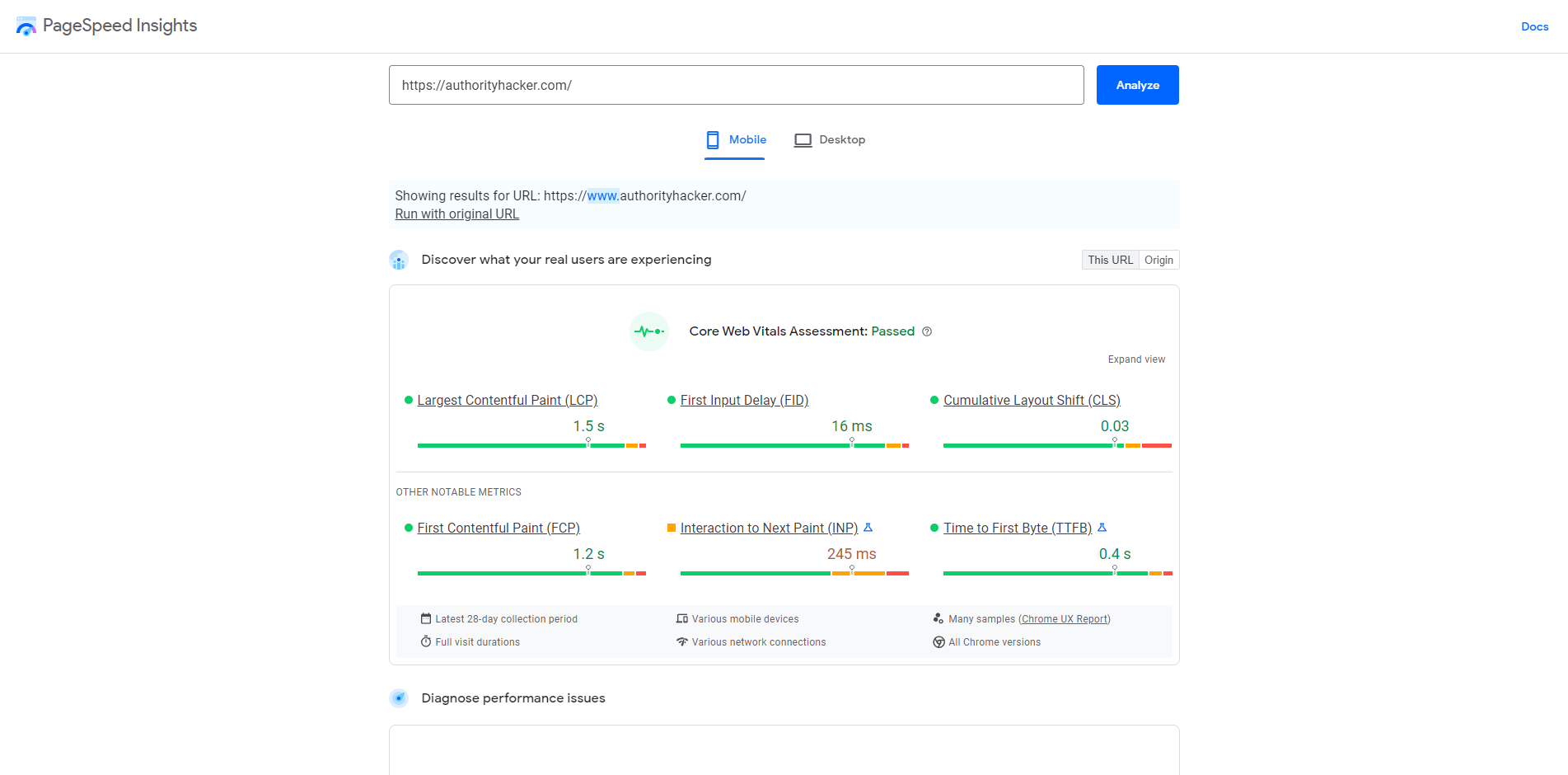
PageSpeed Insights analyzes the page according to these Core Web Vitals categories:
- Largest Contentful Pain (LCP) – How soon does the largest page element load?
- First Input Delay (FID) – How soon does the page respond when users click on a link?
- Cumulative Layout Shift (CLS) – Does the page’s layout change while the page is loading?
As you can see, the great about the Core Web Vitals is that it doesn’t just measure site speed. It also accounts for how well the site is designed based on its stability.
By nailing all these factors, you can provide an optimal user experience for your site. This increases your chances of ranking high for your keyword and preventing users from leaving your site.
If your site fails, PageSpeed Insights provides you with suggestions on how you can fix your site’s performance issues.
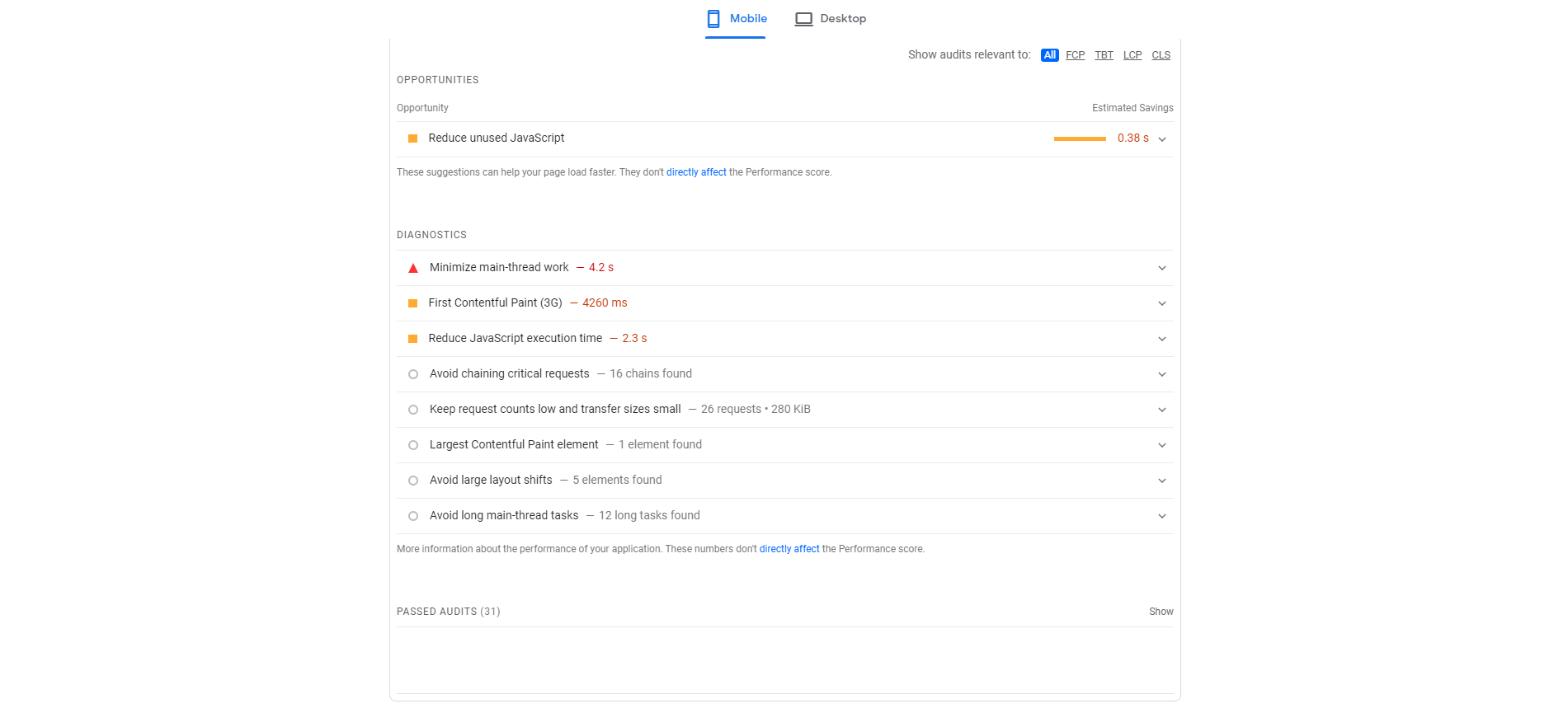
Some of the changes you must make require web programming skills. If you don’t know to fix them, get an expert to help you out.
Below are other considerations to help you improve your site’s Core Web Vitals scores:
- Migrate your website to a better-performing web host that offers a dedicated server.
- Set your caching plugins to fix the issues found in PageSpeed Insights.
- For WordPress site owners, use lightweight and well-coded themes like GeneratePress.
- Use a content delivery network (CDN) to put less strain on your web server while loading your site pages on visitors’ browsers more efficiently.
#3 – Establish Trust with Your Audience
Here’s a quick question: would people buy products from a brand new online store or sites like Amazon or eBay?
Notwithstanding their free one- or same-day delivery, you will probably purchase from the latter. This is because the trust they’ve built with customers through the years precedes them.
Even if you’re not selling anything on your site, trust separates your website from the rest. This is why people rely on authoritative news outlets for breaking news and updates.
Google’s Search Quality Rater Guidelines document mentions E-A-T, an acronym for Expertise, Authority, and Trustworthiness.
Essentially, it would be best if you exhibited expertise and authority in your industry. By showcasing your knowledge about your site’s topic, Google raters will consider your site a “high-quality page.”
From here, you can expect Google to rank your page high on search results.
To be clear, E-A-T is not a ranking signal. It is merely a characteristic shared across top-ranking pages for their keywords.
Nonetheless, it’s hard to ignore the benefits that E-A-T brings to the table, mainly because it goes beyond your normal SEO.
While it’s difficult to qualify what constitutes E-A-T since these are very abstract terms, it’s not impossible to showcase a level of authority and expertise on your site.
This way, you can build enough trust on your site that Google won’t be able to ignore.
Aside from reading Google’s document, below are ideas to help display your site’s authority:
- Feature social proof – Testimonials from influencers in your industry and client success stories can help shape people’s perception of you in a positive light. You can even feature certificates and badges you received from award-giving bodies through the years.
- Establish consistency – People appreciate predictability more than you think. In this case, if you publish high-quality content at least twice a week at a particular time, make sure not to skip a beat. The same thing goes if you’re posting on social media or sending emails to your subscribers. Developing a rhythm with your content marketing allows you to draw more people into your brand, enabling them to trust you.
- Link out to trusted sources – When creating a blog post and wishing to cite an article published elsewhere, make sure that the site where the article is published is also trustworthy. Use SEO metrics and check its social media followers to determine how authoritative the site is.
- Update old content – Some of your previously published posts may contain outdated information. This won’t reflect well on people’s outlook towards you. So, it would help if you found time to rework these posts to reflect the latest strategies and practices prevalent now.
Conclusion
As Google finds ways to provide users with a much better search experience, so do website owners.
It’s not just about observing the best on- and off-page SEO practices. It’s also thinking outside the box and beyond your preconceived notions of SEO.
With holistic SEO, you should be able to cover all your bases to create a website geared towards search engines and your audience. Following the tips above, you should be on your way towards that.

About FatRank
Our aim to explain and educate from a basic level to an advanced on SEO and Social Media Marketing.
